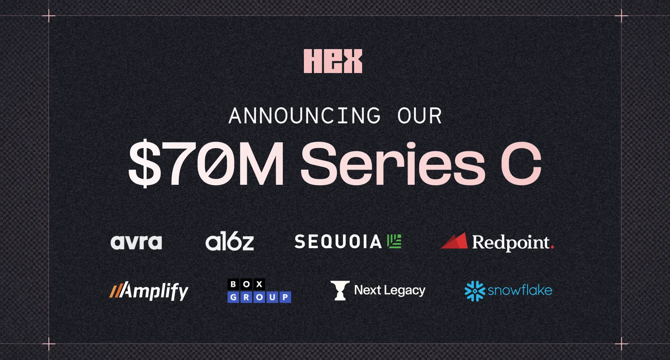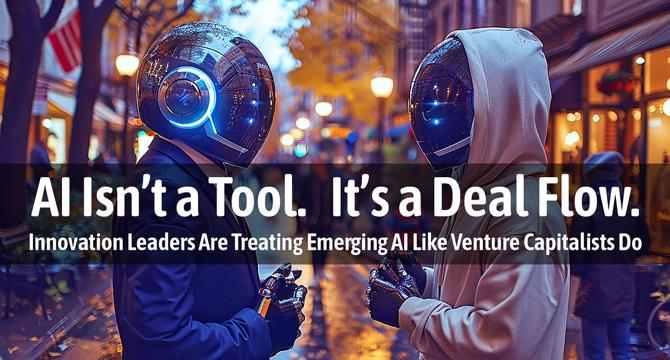Venture Capital News
Medium
273

Image Credit: Medium
How to Get a Professional Logo Designed on Fiverr for Your Small Business (Affordable & Fast)
- Getting a high-quality logo for a small business can be daunting and expensive, but Fiverr offers a cost-effective solution with talented professionals.
- A professional logo is crucial for making a great first impression, building brand recognition, fostering emotional connection, differentiation, and ensuring versatility.
- Traditional options like high-end design agencies, generic logo makers, and DIY methods can be costly, uninspired, or time-consuming.
- Fiverr provides an affordable gateway to professional logo design, with diverse talent, quick delivery, and clear packages.
- To find a designer on Fiverr, search smartly, filter for quality, scrutinize gig listings, write a detailed brief, communicate effectively, and review before finalizing.
- Include business name, industry, target audience, brand values, style preferences, color choices, inspirations, key messages, and usage details in your design brief.
- Be responsive, provide constructive feedback, limit revisions, check everything, download all files, and confirm copyright ownership when working on the logo project.
- Maximize your Fiverr partnership beyond the logo by considering brand style guides, social media kits, business card design, and website development.
- By leveraging Fiverr's resources and following the steps outlined, small businesses can obtain a unique, high-quality logo efficiently and affordably to elevate their brand.
- Stop dreaming and start creating your perfect logo today to enhance your small business brand presence.
Read Full Article
16 Likes
Saastr
296

AI, Sales + GTM in 2025/2026: This Changes Everything with Jason Lemkin and Owner CRO Kyle Norton
- Jason Lemkin and Kyle Norton discussed AI in Sales at SaaStr + AI Summit 2025, emphasizing the need for revenue leaders to evolve with AI tools and technologies.
- Key takeaways include the importance of AI curiosity, the emergence of 50% AI, 50% human teams, and the potential for AI to amplify performance gaps in sales teams.
- AI is reshaping sales operations, with companies like Bamboo HR and Scale AI achieving significant productivity increases through automation.
- The CRO hiring playbook now includes an AI component, focusing on candidates' active use and understanding of AI tools.
- AI is driving a shift towards more specialized human roles in sales, with AI handling tasks like CRM management and basic customer support.
- AI will widen the performance gap between elite and average sellers, prompting talent strategy decisions for revenue organizations.
- The contact center transformation due to AI previews changes coming for sales, as organizations shift towards managing hybrid teams of AI agents and humans.
- Successful AI implementation requires continuous refinement, training, and leadership involvement to avoid failure in sales operations.
- AI augments the challenger sale approach, elevating the need for human sellers to excel in relationship building and strategic influence.
- Revenue leaders need to become AI-native quickly to maintain a competitive advantage and drive sales transformation in an AI-first world.
- The bottom line for CROs is to embrace AI transformation to expand their impact and effectiveness in sales leadership or risk becoming obsolete in the evolving sales landscape.
Read Full Article
17 Likes
Medium
227

Image Credit: Medium
You Will Lose Your Job To AI
- A new Great Depression is predicted to hit, leading to significant job losses to AI technology.
- The projection suggests that 90% of Americans will face unemployment in the coming years, with only a few tech billionaires remaining unaffected.
- The impact of AI on job security is expected to be widespread, affecting even traditionally secure white-collar jobs.
- The situation signifies a shift where a college degree may no longer guarantee job security in the face of technological advancements.
Read Full Article
13 Likes
Medium
154

Image Credit: Medium
The Ego Economy: Are We Hustling for Validation?
- The Ego Economy is a culture where self-worth is measured by recognition, leading to a paradigm shift in how we perceive success and validation.
- In this economy, work becomes a stage, hustle is performative, and validation through social media metrics has replaced traditional measures of success.
- The pursuit of visibility and external validation has transformed the way people approach work, relationships, and self-image, often at the cost of authenticity and mental well-being.
- The rise of the Hustle Persona glorifies constant productivity but conceals the toll it takes on individuals, fostering a culture of comparison and burnout.
- Amidst the quest for recognition, we risk losing touch with our true motives, leading to a disconnect between our actions and our core values.
- Escaping the Ego Economy requires shifting focus from projection and validation to purpose and authenticity, emphasizing meaningful contributions over mere visibility.
- Reclaiming one's identity without the external validation involves introspection and prioritizing intrinsic motivations over external approval.
- Practical steps to break free from the validation treadmill include evaluating actions for impact, creating without seeking external validation, and tracking internal metrics of success.
- True success lies in living a life aligned with personal values, emphasizing depth, lasting fulfillment, and authenticity over fleeting validation.
- Ultimately, choosing authenticity over seeking external validation is portrayed as a form of rebellion in a society fixated on social approval and recognition.
Read Full Article
9 Likes
Medium
81

Image Credit: Medium
Why Self-Reported Data Is Breaking Fintech — And What Comes Next
- Fintech industry is realizing the drawbacks of relying on self-reported, unverified, and outdated data for making financial decisions.
- Modern finance platforms need to integrate operations, hiring, research, and investment data to make better decisions in real-time.
- The next generation of fintech platforms will focus on evaluating, contextualizing, and aligning data with capital and opportunities for smarter decision-making.
- AAK TeleScience is an integrated ecosystem that utilizes verified data to power decision-making processes in the evolving innovation economy, aiming to connect work outputs with funding, hiring, and research.
Read Full Article
1 Like
Medium
45

Image Credit: Medium
Smart Ways to Raise Money for Your Small Business
- Professional business consulting services can help navigate funding challenges for small businesses.
- In India, small businesses are officially classified as Micro, Small, and Medium Enterprises (MSME).
- MSME classification is based on investment and performance, with revised limits up to ₹125 Crore investment and ₹500 Crore turnover.
- To start a business, capital is needed for initial investment and working capital to run the business daily.
- Steps to calculate the total money needed for starting a business include listing all needs, estimating costs, adding contingency funds, and revising the list.
- Funding options for small businesses include bootstrapping, bank loans, angel investors, venture capital firms, and crowdfunding.
- Government schemes like PMMY, PMEGP, NSIC, Stand-Up India, SIDBI Fund of Funds, and SISFS provide financial assistance to MSMEs in India.
- CGTMSE offers collateral-free credit up to ₹5 crore to Micro and Small Enterprises to bridge the credit gap.
- Common mistakes while taking business funding include lack of planning, poor money management, outdated methods, overspending, and ignoring market needs.
- Business consulting services and strategic planning can help small businesses use funds wisely and navigate challenges for sustainable growth.
Read Full Article
2 Likes
Saastr
419

The Bay Area Has 54% of All SaaS Funding. Everyone Else Isn’t Even Close.
- The Bay Area dominates SaaS funding with 54.2% of all capital, more than 5x the next closest market.
- New York leads as the second-largest SaaS funding hub, with Boston and Seattle following closely behind.
- Austin, despite ranking #6 in SaaS funding, is noted for its diverse startup scene and its position in the overall startup funding ecosystem.
- The top 4 SaaS markets control 75.3% of all SaaS funding, showcasing extreme concentration in SaaS investments.
Read Full Article
25 Likes
Medium
182

Image Credit: Medium
Top 10 Must-Have Sections of a VC-Ready Investment Memo
- An investment memo is a critical thinking tool that documents the 'why' behind every investment decision.
- Key components of a VC-ready investment memo include a concise overview of the opportunity, detailing the problem the startup solves and its significance.
- The memo should focus on the product or service, highlighting its features and explaining how it offers a better solution than alternatives.
- Other important sections of the memo cover the founding team, market size and dynamics, revenue model, traction indicators, competition analysis, risk assessment, and the overall investment thesis.
Read Full Article
10 Likes
Medium
405

Image Credit: Medium
How Much Capital Should Your Startup Raise? A Data-Driven Guide for Founders
- Startup funding should be based on clear, actionable milestones that demonstrate value creation and business model validation.
- Setting strong milestones helps align founders and investors, providing transparency on fund utilization and future growth.
- Financial models should detail expenses, burn rates, buffer months, and contingency percentages to guide capital raising decisions.
- Startups should link expense drivers to growth metrics to demonstrate understanding of financial planning to investors.
- Realistic revenue projections, based on pricing models and market analysis, are essential for verifying business model viability.
- Different approaches to capital raising include funding full expenses or just covering net burn, depending on stage and business model.
- Striking a balance in fundraising is crucial to avoid heavy dilution or cash-flow anxiety by aligning capital needs with growth milestones.
- Tailoring fundraising paths to match runway needs and dilution tolerance can lead to successful funding rounds.
- Fundraising strategies can include raising a lump sum for a longer runway, lean rounds for disciplined spending, or raising in stages based on traction.
- Utilizing non-VC money and implementing effective revenue-generating tactics can strengthen cash flow and reduce burn rate.
Read Full Article
24 Likes
Saastr
309

Dear SaaStr: We’re Starting a Big Paid Pilot. How Do Maximize the Chances of Success?
- For a successful paid pilot, set clear goals and success metrics aligned with customer needs.
- Define customer success criteria by asking what success looks like for them and tie it to measurable metrics.
- Outline the pilot scope, establish roles and responsibilities, and create a success plan with milestones.
- Address potential risks proactively, tie the pilot to future expansion, and ensure alignment with the customer on goals and next steps.
Read Full Article
18 Likes
Medium
54

Image Credit: Medium
Why Smart Investors Care About Intellectual Property: How Smart Investors Mitigate Risk and…
- Intellectual property (IP) is crucial for investors due to its role in protecting a company's innovations and reducing risk.
- IP provides a monopoly right to block competitors, allowing companies to focus on growth activities over an extended period.
- Understanding the types of IP rights such as patents, trademarks, copyrights, and trade secrets is vital for investment analysis.
- Valuing IP portfolios can be challenging but is essential in determining the worth of a company's intangible assets.
- Strong IP portfolios not only protect value but also create it by signaling uniqueness and defensibility to investors.
- IP-backed startups attract premium acquisition offers as acquirers see them as strategic assets with a competitive edge.
- IP can be monetized through licensing agreements, enabling startups to generate income beyond product sales.
- Investors should prioritize IP due diligence to protect investments, enhance valuations, and secure strategic advantages.
- IP drives competitive advantage, increases acquisition value, and mitigates risks in investment decisions.
- Strong IP portfolios are not just legal formalities but critical business assets for long-term success and growth.
Read Full Article
3 Likes
Siliconangle
374

Image Credit: Siliconangle
Hex raises $70M to expand AI-powered data analytics platform
- Hex Technologies Inc. raises $70 million in new funding to expand operations and enhance its AI-powered data analytics platform.
- Founded in 2020 by former Palantir Inc. employees, Hex offers a collaborative data workspace aimed at improving data utilization in organizations.
- Hex's platform features a notebook-based interface supporting SQL, Python, and no-code inputs, along with an App Builder for creating interactive data applications without additional coding.
- The new funding, totaling $70 million, brings Hex's total raised amount to $172 million, with notable customers including Reddit, Cisco, NBA, and others.
Read Full Article
22 Likes
Medium
269

Image Credit: Medium
The VC Industry Loves Data. But Doesn’t Use It…
- Despite the tech-savvy image, the VC industry still heavily relies on manual processes using spreadsheets, emails, and decks.
- Kruncher is an AI-native platform that streamlines venture capital processes by automating tasks such as evaluating decks, sending emails, and monitoring follow-ups.
- It aggregates startup data, generates deal memos, facilitates IC discussions, and automates LP reports to save time and enhance efficiency.
- The platform aims to augment human capabilities in VC by handling repetitive administrative tasks, allowing investors to focus on building relationships and understanding founders better.
Read Full Article
16 Likes
Medium
86

Image Credit: Medium
AI Isn’t a Tool. It’s a Deal Flow.
- SEIKOURI emphasizes the importance of owning AI technology for strategic advantage over subscribing to off-the-shelf solutions.
- The company assists clients in identifying disruptive AI startups that operate in stealth, offering customized solutions before they become publicly available.
- SEIKOURI focuses on finding existing AI solutions that match clients' business problems, allowing for control and deep integration to meet specific needs.
- The company believes that being ahead in adopting innovative AI technology provides companies with a competitive edge and allows for strategic control in the market.
Read Full Article
3 Likes
Pymnts
264

Image Credit: Pymnts
Saudi Arabia Unveils $10 Billion VC Fund in Race for Middle East’s AI Crown
- Saudi Arabia unveils a $10 billion venture capital fund through its state-backed AI company, Humain, to become the AI leader in the Middle East.
- Humain plans to launch Humain Ventures, a new venture fund targeting startups globally, and build significant data center capacity by 2030.
- The company aims to handle 7% of the world's AI training and inferencing workloads by 2030 and has secured deals with major tech firms like Nvidia, AMD, Amazon, and Qualcomm.
- Crown Prince Mohammed bin Salman chairs Humain as part of Saudi Arabia's strategy to diversify the economy with a focus on AI and collaboration with U.S. tech companies.
Read Full Article
15 Likes
For uninterrupted reading, download the app